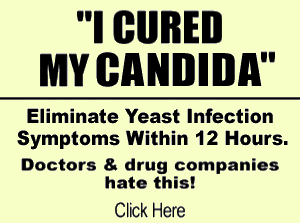Candida Diet Guidelines
Being infected with Candida is no fun. More often than not, many details change in the life of a person affected. If you unluckily happen to be one of these individuals who are living uncomfortable lives, chances are, you’re doing every little thing you can just to free yourself from the pains of having Candida. One thing you probably tried to change is your diet.
Since Candida yeast cells thrive on sugar, you might want to lay off on sugary treats like cake and candies. It might hurt your sweet tooth, but you’re better off without sugar, at least for now. Don’t be fooled by the nutritional value of fruits. Normally, you’re suggested to have your daily fix of these nutritious stuff. But keep in mind that they have fruit sugars as well, so you better stay away from them for a while.
If curbing your sweet-tooth cravings just isn’t possible for you, then you might want to just go for a good sugar substitute or artificial sweetener. They satisfy your need for sweets but you can rest assured you won’t be satisfying the need of your yeast cells as well.
Refined carbohydrates such as the regular white bread, pasta or rice are easily converted into sugar so you must opt for wholegrain counterparts. Also, milk contains lactose which is also converted into sugar so milk and any milk-containing products should be off-limits, too.
Fructose and molasses are still sugar, albeit being considered as natural sugars. Even non-sweet tasting dishes like certain sauces and other main courses have hidden sugars in them, so don’t be misled.
If possible, educate yourself about the glycemic load of the carbs you are eating. It’s best that you eat foods with a low glycemic load. Thus, as the food you eat are being digested, the sugars are released at a slow pace. Furthermore, you are suggested to have protein-rich meals or snacks as it can stabilize your blood sugar levels, making you less prone to having food cravings.
Obviously, you should not be consuming yeast, given that you have a yeast infection. That said, avoid yeast-raised breads, pizza, and the like.
All these may seem quite difficult to follow for a long time, but don’t cry your eyeballs out, it’s not for eternity.
Related Candida Articles
Categories: Articles about Treating Candida Tags: Candida Cleanse, Candida Diet, cells, change, need, sugar, Treating Candida
What are some symptoms of yeast infection?
Question by Jessikah: What are some symptoms of yeast infection?
I found some things that are leading me to believe that i have a yeast infection. The first is white bumps on my inner vaginal lips. And then there are some white yeast looking stuff right above my clit and sometimes my vagina has a gross smell. Is it yeast infection?
No my VJ does not itch or burn. Is a vagina supose to be dry cuz mine kinda is. Please only serious comments i need help
Best answer:
Answer by Shauntel_Pelerine
White bumps on the inter lips is not a yeast infection. A yeast infection symptoms are burning, itching, and discharhed that could be discolored or smelly. You need to see your GYNO.
Know better? Leave your own answer in the comments!
Categories: Candida Questions Tags: Infection, need, some, Symptoms, vagina, white, Yeast, yeast infection
Natural And Effective Yeast Infection Treatment
Those at high risk for yeast infections are mainly women due to the nature of their biology. This means that the vagina is a moist and warm place, and yeast just likes this to hide and host in, and then bring about an infection. Additionally, hard drinker and those who have diabetes are also at a high risk for getting a yeast infection.
In the treatment, hydrogen peroxide can be opted for when making a douche. Put in 2 capfuls of hydrogen peroxide to a quart of warm water. Another way to go about this is by adding a couple of capfuls of hydrogen peroxide to your bath water and soak. Always remember that the vagina is self-cleansing. After having cleared up the yeast infection, you need not to douche on a regular basis.
Garlic works like magic on yeast infection, almost. You can just insert a clove of garlic into your vagina. Do this for 2 days with intervals of a few hours. You can ingest it orally, too.
Having at least eight 8-oz. glasses of water daily will help, too. You get to urinate more, thus eliminating the sugars that feed yeast. Also, you get to lessen your chances of getting another yeast infection.
Yogurt is yet another famous choice for a lot of women when they suffer from yeasty infection. Eating yogurt is okay, but applying directly to the infection is the way to go. Yogurt has Lactobacillus Acidophilus in its ingredients, which is found in a healthy vagina. You can freeze the yogurt and insert it into your vagina like you would a tampon.
Moreover, to boost your immune system, take into consideration taking vitamin and nutrition supplements. Say, intake of Vitamins A, C, and E regularly throughout the period of your fungal infection will boost the efficacy of your immune system and then help the health and appearance of your skin, too.
There is an array of other natural yeast infection treatments out there, all you need to do is go over this blog and find out more!
Categories: Articles about Treating Candida Tags: high, Natural, natural remedies, need, vagina, yeast infection, yeast infection treatment
